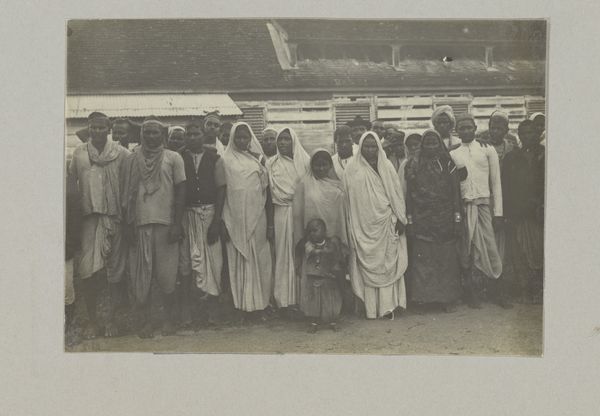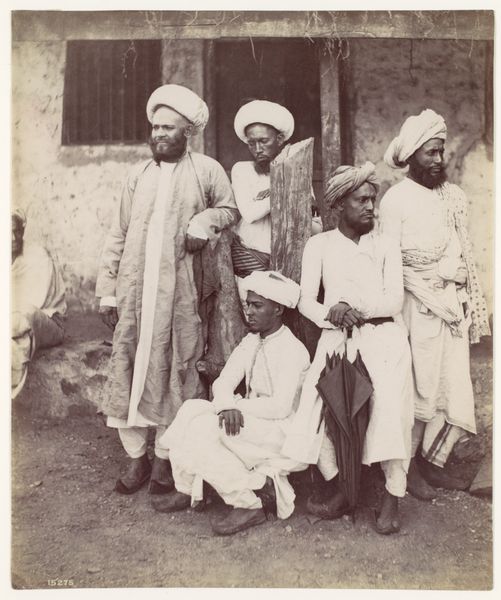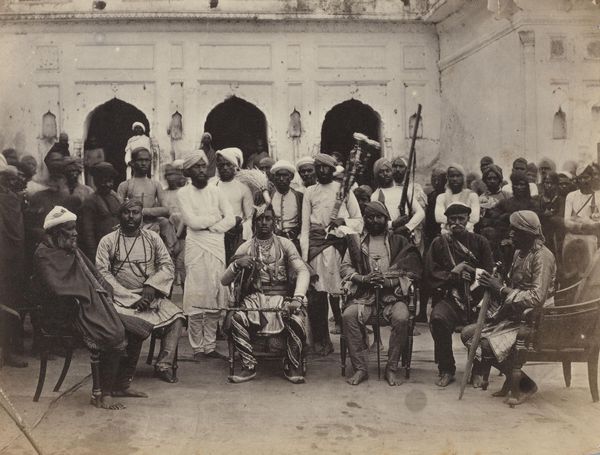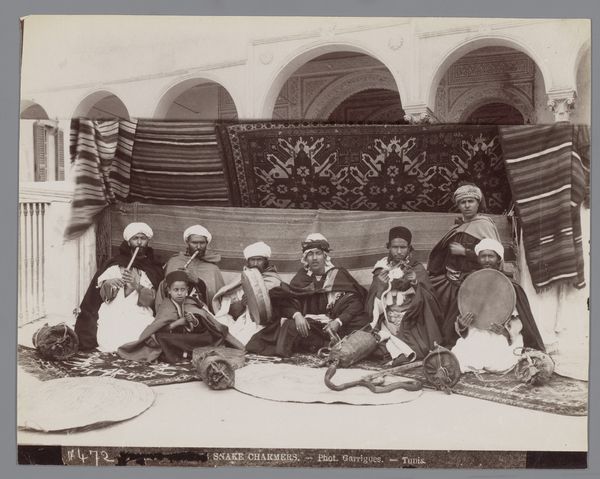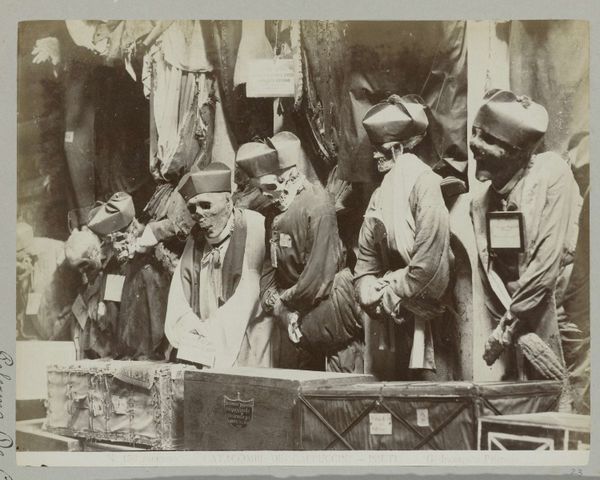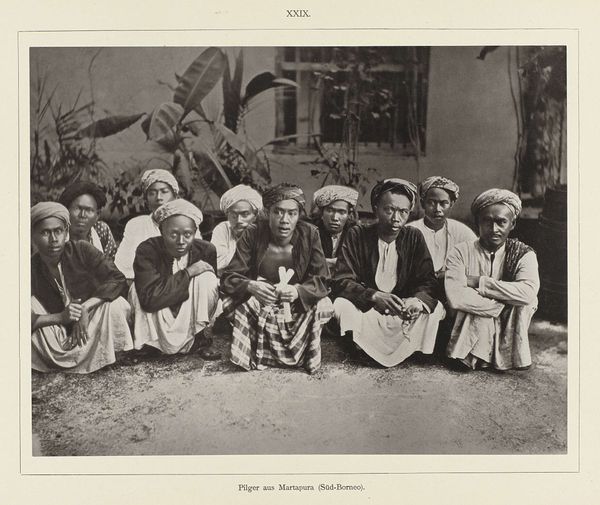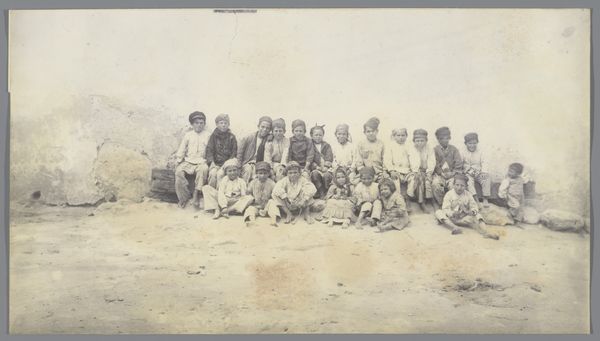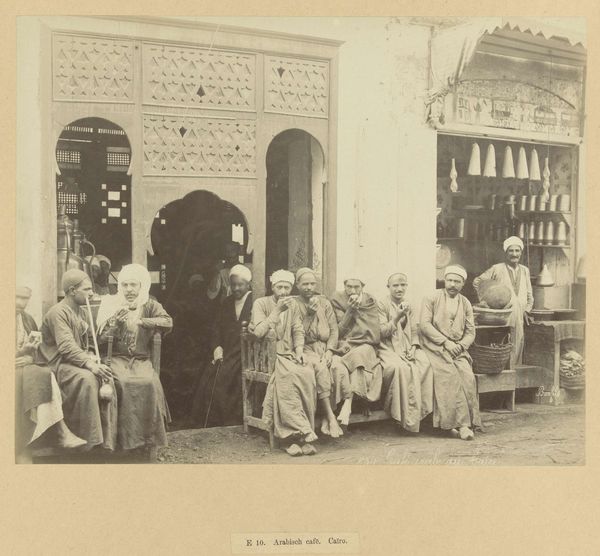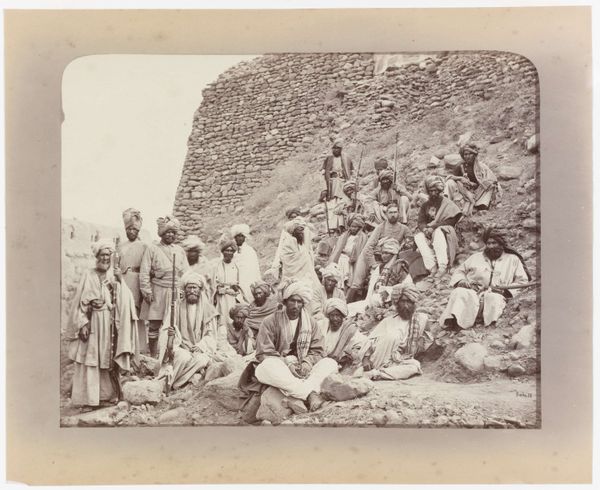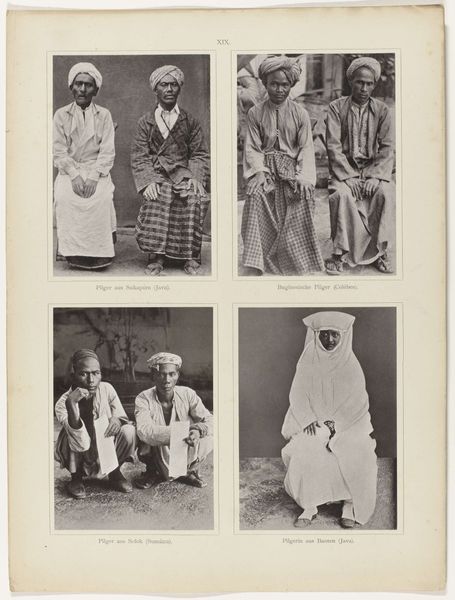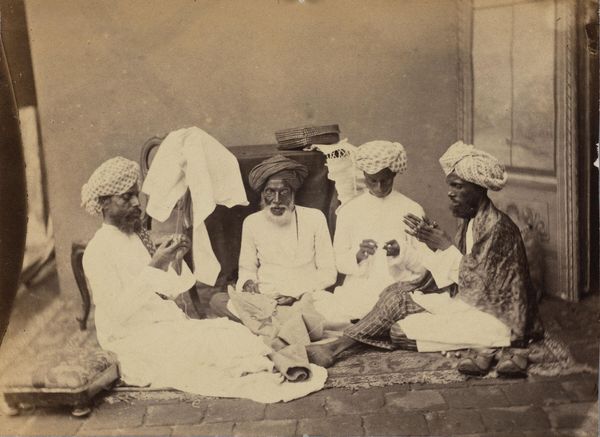
photography, gelatin-silver-print
#
portrait
#
16_19th-century
#
photography
#
group-portraits
#
orientalism
#
gelatin-silver-print
#
19th century
Dimensions: height 194 mm, width 310 mm
Copyright: Rijks Museum: Open Domain
Curator: It feels quite imposing, doesn't it? All these men, looking directly at us. Editor: Indeed. We are looking at "Groepsportret van onbekende Afghaanse mannen," a group portrait of unknown Afghan men created by John Burke between 1878 and 1880. This gelatin silver print, dating from the late 19th century, gives us a glimpse into a specific moment and possibly the dynamics of colonial encounters. Curator: It strikes me as staged, almost like a tableau vivant designed to project a certain image to a Western audience. The turbans, the postures... the gaze. I wonder what power dynamics are at play. Who commissioned this and for what purpose? How did they conceptualize themselves in relation to those portrayed? Editor: The arrangement itself is rather pyramidal. Notice how the repeated triangular forms created by the white headwear create an almost floral, perhaps even crown-like motif. I suspect that the white headwear indicates high status among the figures shown here, conveying not just unity but also, perhaps, spiritual authority. The somber expression shared by each of these sitters creates a palpable solemnity and gravity in the work as well. Curator: That's a fascinating observation. It brings to mind Edward Said's concept of Orientalism. How images like this were often used to reinforce Western perceptions of the "Orient" as exotic, mysterious, and ultimately subordinate. We should be critical and recognize these works as instruments for controlling and maintaining hierarchical structures in the service of Western Colonial interests. Editor: I agree there are obvious overtones of "othering", yes. But the picture plane teems with complex, competing forces and gestures, all frozen in time. How might it complicate, or maybe undermine, Orientalist conventions? It is an aesthetic achievement as well that goes beyond social engineering: A snapshot imbued with its own haunting symbolic value. Each of their faces feels so individual despite the formality of the arrangement and headwear. Curator: It prompts important conversations about representation, power, and the ethics of visual culture, urging us to confront uncomfortable aspects of our shared history and envision new ways of engaging with such material. Editor: Yes, absolutely! By looking closer we hopefully teased out its layered cultural meanings for our listeners, recognizing that any image speaks through historical symbols in compelling ways, yet its full import only emerges through engaged questioning of those symbolic traditions.
Comments
No comments
Be the first to comment and join the conversation on the ultimate creative platform.
